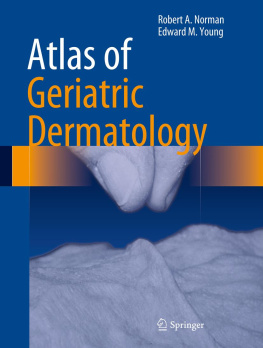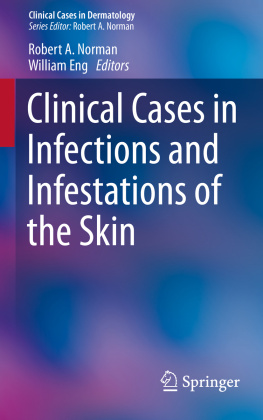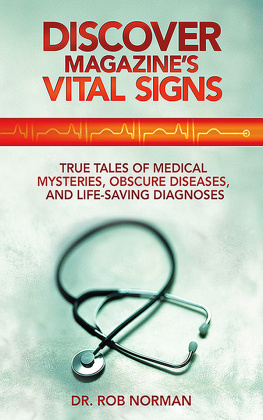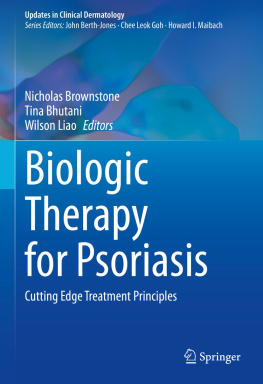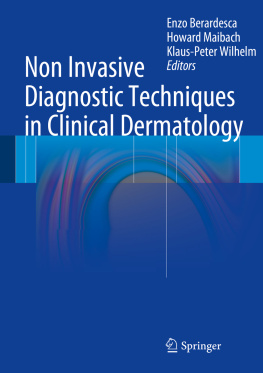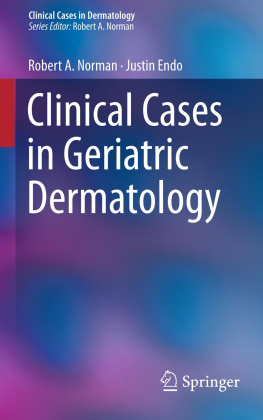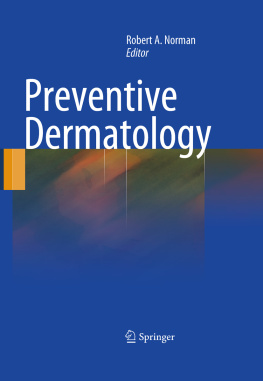Introduction
The field of medical genetics helps elucidate the molecular basis of disease. In the last several decades this knowledge has also helped with the clinical management of patients and their loved ones. Genetic counseling, early testing strategies and therapeutic options are ways in which a knowledge of genetics has changed the practice of clinical medicine.
The link between dermatology and genetics is well known and clinically applied. However, because of the nuances of many genetic diseases, it can be daunting for any clinician to recognize, diagnose and manage some of the most complex conditions. This chapter aims to help clinicians connect the known genetics of a disease to beneficial clinical practice.
Gardners Syndrome
Gardners syndrome is a subset of familial adenomatous polyposis (FAP) with several prominent extraintestinal manifestations. Individuals inflicted with this syndrome develop hundreds to thousands of adenomatous colorectal polyps and have a 100% lifetime risk for colorectal cancer, typically diagnosed by 40 years of age. Gastric, duodenal, periampullary, and small bowel polyps also can occur but have lower malignant potential. In this syndrome, there is also an increased risk for other tumors including desmoid, thyroid, hepatoblastoma, nasopharyngeal angiofibroma, pancreatic, and adrenal adenomas. Other extraintestinal findings include congenital hypertrophy of the retinal pigment epithelium (CHRPE), dental abnormalities, cutaneous lesions, osteomas, anemia, occult blood in stool, bowel obstruction, and weight loss [].
The cutaneous lesions seen in this syndrome include epidermal cysts, fibromas, lipomas, and pilomatricomas []. None of the cutaneous lesions have the potential to progress to malignancy, but they are important to identify since they can sometimes occur before the adenomatous polyps develop. Thus, early detection of the syndrome can prevent the development of inevitable colon cancer.
Genetics
Familial adenomatous polyposis, including Gardners syndrome, is caused by a germline mutation of the APC gene on chromosome 5q21. It is an autosomal dominant mutation with close to 100% penetrance.
Epidemiology
The overall incidence of FAP is 1 in 10,000 births.
Genetic Testing Recommendations []
Genetic testing of patients with suspected Gardners syndrome should include APC gene mutation analysis.
Genetic testing should be offered to (1) first-degree relatives of affected individuals with an identified mutation at age 1012 years or sooner in clinically suspected individuals and (2) individuals with a phenotype suggestive of Gardners (or FAP) with >10 cumulative colorectal adenomas and/or suggestive extracolonic manifestations (duodenal/ampullary adenomas, desmoid tumors (abdominal>peripheral)), papillary thyroid cancer, congenital hypertrophy of the retinal pigment epithelium ((CHRPE), epidermal cysts, osteomas) with no known family history.
Recommendation with Known Mutation []
Individuals should be screened for colorectal cancer by annual colonoscopy starting at puberty or whenever there are suggestive symptoms such as chronic diarrhea, rectal bleeding, or abdominal pain []. (NCCN clinical practical guidelines)
Immediate colectomy if there is documented or suspected cancer or significant symptoms. Relative indication for colectomy with the presence of multiple adenomas >6 mm, a significant increase in adenoma number, and inability to adequately survey the colon because of multiple diminutive polyps.
Postsurgical surveillance should include yearly endoscopy of rectum or ileal pouch, and examination of an ileostomy every 2 years [].
Screening for gastric and proximal small bowel tumors should be done using upper endoscopy including duodenoscopy starting at age 2530 years [].
Annual thyroid screening by ultrasound []
Biannual screening should be offered until age 10 years with -fetoprotein and ultrasounds due to increased risk of hepatoblastoma that most often occurs in the first 5 years of life [].
Periodic abdominal CT imaging for desmoid tumors is not recommended but preoperative abdominal CT scan before colectomy may be considered if desmoids have been an issue in family members.
Peutz-Jeghers Syndrome
Peutz-Jeghers syndrome (PJS) is characterized by single or multiple hamartomas throughout the gastrointestinal tract, hyper-pigmented macules, and increased risk of carcinoma of both gastrointestinal and non-gastrointestinal organs. The slightly increased incidence of carcinoma includes but is not limited to the small bowel, colon, stomach, ovary, breast, cervix, testicle, and lung [].
The hyper-pigmented macules occur in up to 95% of those inflicted with PJS and occur around the lips, oral mucosa, buccal mucosa, face, genitalia, soles of feet, and palmar surfaces [].
Genetics
Peutz-Jeghers syndrome is an autosomal dominant syndrome caused by a germline mutation in the tumor suppressor STK11/LKB1 gene, which encodes for a serine-threonine kinase on chromosome 19p13.3 [].
Epidemiology
The incidence of PJS is estimated to be 1 in 8300 to 1 in 280,000 births [].
Genetic Testing Recommendations []
Genetic testing should be offered to (1) individuals with a known family history of Peutz-Jeghers Syndrome and (2) individuals with perioral or buccal pigmentation and/or two or more histologically characteristic gastrointestinal hamartomatous polyp(s).
Recommendation with Known Mutation []
Monitor for colon, stomach, small bowel, pancreas, breast, ovary, uterus, cervix, and testes cancers
Colonoscopy, esophagogastroduodenoscopy, and video capsule endoscopy for colon, stomach, and small bowel evaluation, respectively, starting at age 8 years. If polyps present, repeat every 3 years; if no polyps, repeat at age 18, then every 3 years, or earlier if symptoms occur [].
Surveillance for pancreatic cancer should be with endoscopic ultrasound (EUS) and/or magnetic resonance imaging (MRI) of the pancreas annually starting at age 30 years, or 10 years younger than the earliest age of pancreatic cancer in the family.
Annual self-exam starting age 18, annual breast MRI, and/or mammogram starting at age 25.


